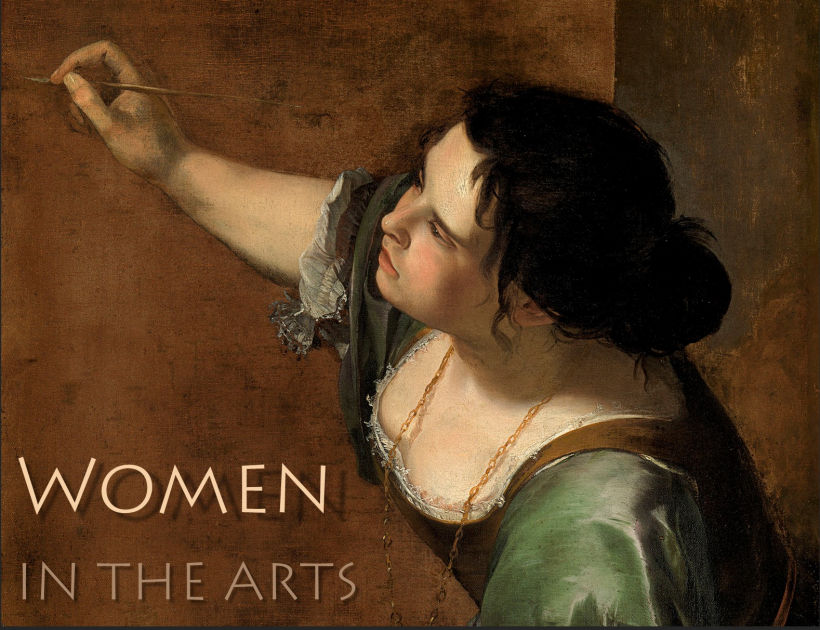5. Domestic? Why?
If you look through the works of female composers, painters, and writers, pretty much to the end of the 19th
century, you will find a preponderance of short lyrical forms and subjects related more often to the life
of the family and household than to the outer world. Is this because women felt more at home on such a scale
and with such subjects, or were these all they had the opportunity to do? It is a question fraught with
difficulty, but one we must try to untangle nonetheless.
Works created by women that are small in scale or intimate in subject, are often
described as "domestic." But is this necessarily so? The artists examined today suggest reasons
why this might be the case—yet they often challenge that assumption as individuals. Angelica Kauffmann
painted society portraits, yes, but in the works she considered most important she sought to define her role
as a woman painting in a man's world. Mary Cassatt was known for her portraits of mothers and children,
yet she herself was childless and an ardent supporter of women's rights. Clara Wieck was a leading
pianist of her age, and her performance fees put bread on the table for her husband, Robert Schumann, yet she
continued a steady production of compositions in her own right. Amy Beach, another piano prodigy, wrote
as "Mrs. H.H.A. Beach," yet composed the first symphony to be published by a woman in America. And Julia Ward
Howe, the author of such stirring lines as "he is trampling out the vineyards where the grapes of wrath are
stored," finally broke free from the restrictions of her husband to become a tireless campaigner for universal
suffrage.
The script, videos, and images will be posted immediately after class.
Here are brief bios of the artists, composers, and writers considered in the class, listed in order of birth.
All the specific biographies of women featured in the course are collected in the
BIOS link on the syllabus page.
 |
Anne Bradstreet, 1612–72. American poet.
Born to a wealthy Puritan family in England, Bradstreet was well educated. She emigrated to Massachussetts shortly after her marriage to an official in the colony. Her collection, The Tenth Muse Newly Sprung up in America (1650), shows her love for her husband, her modest pride in her abilities as a woman, and her delight in the natural world.
|
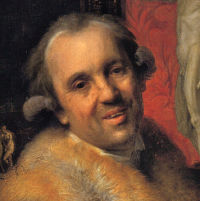 |
Johann Zoffany, 1733–1810. German English painter.
Zoffany settled in England in 1760 after working in Rome. He was fortunate to win the patronage first of the actor David Garrick and then of King George III. He made his fortune, however, in India between 1783 and 1789, painting various Indian princes and their courts.
|
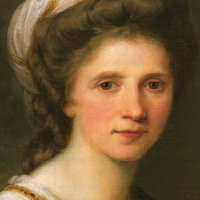 |
Angelica Kauffmann, 1741–1807. Swiss painter.
Moving to London in her twenties, she became a foundation member of the Royal Academy as a portrait painter, but moved to other subjects, first in England and later in Italy.
|
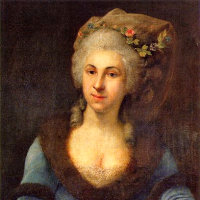 |
Mariana Martines, 1744–1812. Spanish Austrian composer.
The daughter of a Neapolitan of Spanish descent who had moved to Vienna, Martines was educated under the guidance of Haydn, Metastasio, and others. Her works, both vocal and instrumental, tend to be showy and virtuosic. In 1772, Charles Burney said of her work that is was "neither common, nor unnaturally new."
|
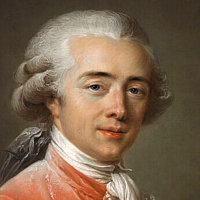 |
François-André Vincent, 1746–1816. French painter.
Vincent was a neo-classical painter who won the Prix de Rome and numerous other awards and became Master of Drawings to Louis XVI. He has since been eclipsed by his contemporary David.
|
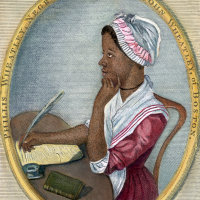 |
Phillis Wheatley, 1753–1784. American poet.
"Wheatley is considered the first African-American author of a published book of poetry. Born in West Africa, she was kidnapped and subsequently sold into enslavement at the age of seven or eight and transported to North America, where she was bought by the Wheatley family of Boston. After she learned to read and write, they encouraged her poetry when they saw her talent, and emancipated her soon after." [Wikipedia] Though celebrated for a while, she died in poverty at the age of 31.
|
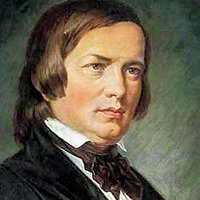 |
Robert Schumann, 1810–56. German composer.
After an injury to his hand (while studying with his future father-in-law Friedrich Wieck) prevented him from pursuing a career as a pianist, he concentrated on composing, producing some of the key works of the Romantic piano literature, together with chamber music, a concerto, four symphonies, and a wealth of songs. He was also a public figure as a critic and thinker. His career was cut short by bipolar disorder.
|
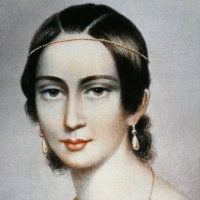 |
Clara Wieck Schumann, 1819–96. German pianist and composer.
Under the tutelage of her father, Friedrich Wieck, Clara began performing at the age of 9, and soon became one of the leading pianists of her time. Against her father's wishes, she married Robert Schumann in 1840, gave him 8 children, and became his devoted artistic executor; she also had a close relationship with Johannes Brahms. Clara's larger compositions date from before her marriage, but she continued a steady output of smaller works over her entire life.
|
 |
Julia Ward Howe, 1819–1910. American poet and activist.
The success of the Battle Hymn of the Republic (1861) gave her the confidence to break free of the restrictions placed upon her by her husband (who objected to the over-personal nature of her poetry), and devote herself first to abolitionist and then to suffragist causes.
|
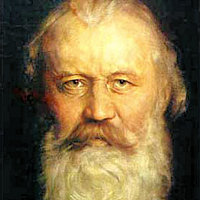 |
Johannes Brahms, 1833–97. German composer.
Although writing music whose harmonies and colors eiptomized the Romantic age, Brahms was a classicist at heart, developing the traditional forms of symphony, sonata, quartet and so on, and avoiding program music and opera. A master of virtually every genre, he is often listed together with Bach and Beethoven as the third of the "Great Bs."
|
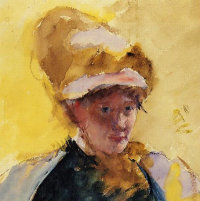 |
Mary Cassatt, 1844–1926. American painter.
The daughter of a wealthy Philadelphia family, Cassatt studied in Paris and settled there in 1874. She became friends with the Impressionists, especially Degas, and exhibited in four of their shows. An early feminist, her own work featured especially the everyday lives of women. She also had an influence in persuading her wealthy friends back home to buy Impressionist paintings.
|
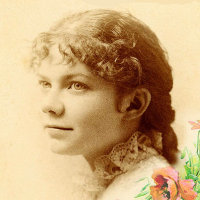 |
Amy Beach, 1867–1944. American composer and pianist.
Her performing career as a child prodigy was curtailed by her marriage to a wealthy doctor, and for a long time she published her compositions under the name "Mrs. H.H.A. Beach." Most of her numerous works are small in scale, but her Gaelic Symphony of 1896 was the first symphony published by a woman in America.
|







































